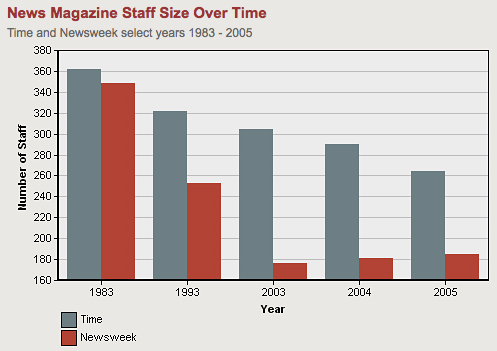The Boss Abides: George Steinbrenner as New York
by Nate Freeman

George Steinbrenner at the end was not the man who once ruled American sport. His neck bubbled out into a series of rolling chins. His skin was sallow and plastic-looking. As he sailed out his years in Tampa, draped in Yankees pajamas for the entirety of the day, his mind had slipped away. “Great to see ya, Tommy,” Steinbrenner said to his friend Tom McEwen when Franz Lidz visited George’s Florida compound in 2007 to report a story for Portfolio. And then he said it again. Great to see ya, Tommy. Great to see ya. Great to see ya. He would repeat the phrase after every question.
But George Steinbrenner was more than this caricature of a man putzing around his Florida digs, speaking nonsense and carrying an extra layer of flesh on his face. He was the man sitting in Elaine’s, where he was a regular, holding court among the prominent faces. He was the man reviled when the Yankees lost, and even more reviled when the Yankees won. He was the man who, like many New York scions, came from somewhere else, in his case the Midwest, and built an empire here instead. And he was the man who, when voiced by Larry David on Seinfeld, just really wanted that eggplant calzone. “Big Stein wants an eggplant calzone!” he yells at George Costanza. “He must have one!”
And when the calzone is in the building, Steinbrenner can smell it.
* * *
George Michael Steinbrenner III was born on the Fourth of July. He grew up in Rocky River, Ohio, where his father used his MIT education to build up Kinsman Marine Transit, one of those uniquely Midwestern companies that can make a man a magnate through the transport of grain and ore. He graduated from Williams-where he was a DKE, naturally-then went off to join the Air Force. Getting shipped off to Korea wasn’t exactly in the cards: his father pulled strings to ensure that he would stay at Lockbourne Air Force Base.
While completing his masters in physical education at Ohio State, Steinbrenner secured a gig as the graduate assistant to Ohio State football coach Woody Hayes, which led to positions at Northwestern and Purdue before leaving to work at his father’s company. From there he went to the American Shipbuilding Company, where he worked his way to the top and cultivated his initial fortune by merging it with his dad’s company. He initially invested in the Cleveland Pipers of the American Basketball League, and, to expand his hometown holdings, he attempted to acquire the Cleveland Indians in 1971; the deal fell through. The next opportunity would force him to look outside the world where his grain-carrying cargo ships dominated the waterways-he put together a group of investors to purchase the New York Yankees from CBS. The arrangement was reached when Steinbrenner met with CBS Chairman William S. Paley, as The Boss giddily recalled to John Cassidy for a 2002 article in the New Yorker.
His first move would be prescient of the remainder of his time seated high up in a luxury box in The House That Ruth Built-he signed a player for a shitload of money. The first of these deals was for Catfish Hunter, for a then-absurd $3.85 million, and this tradition of empire building would continue until today. In 2009, the Yankees’ $210 million budget was far higher than any other team in baseball.
His loose pockets caught up with Steinbrenner on occasion, such as when he made an illegal corporate contribution to Nixon’s re-election, and then made a subsequent bribe to his shipping company to cover up the fact. This brought him a 15-month suspension from commissioner Bowie Kuhn. In 1989, Ronald Reagan granted him an 11th-hour pardon.
Then, in 1990, Steinbrenner made an ill-advised deal with gambler Howard Spira to find damaging information about Yankee outfielder Dave Winfield, whom The Boss had less than kind feelings toward. He was asked to step aside, but Steinbrenner again made his return to the captain’s seat of the franchise in 1993, a few years before a late-nineties period of his team’s wild success on the diamond. He was absent these last few years, and ceded most control to his sons Hank and Hal.
* * *
So what is the legacy of The Boss, then? The longest tenure of ownership in Yankees history did not elicit fanfares from New Yorkers. In an article for New York that ran in the August 15, 1977 issue, Jeff Greenfield spoke for the group resentful of Steinbrenner’s gauche big-spending philosophy, and presupposes this to be a uniquely Ohioan sensibility.
“George Steinbrenner comes from Cleveland,” Greenfield wrote. “It is really too bad for the city of Cleveland, which has been fighting its image as a benighted city of the bush league, but Steinbrenner is so visibly, unavoidably no-class…. It is the ultimate irony: a big-league team in a big-league town in the hands of a bush-league owner.”
This impression of Steinbrenner-the picture of a moneyed upstart from nowhere unable to navigate the currents of the big city like he did the currents of the Midwest-seems absurd now. Yes, he has spent decades infuriating the general populace with his need for total control and his brutally capitalistic approach to the most celebrated franchise in the history of America’s Pastime, but this makes him the consummate New Yorker. His brash and obnoxious demeanor ensured that America’s greatest city had a team that could match it in swagger, flash and performance. The Boss’ Yankees could be sore losers-but when they won, they won with unapologetic pride, the way New York should.
George Steinbrenner was first portrayed as a monumental asshole, hell-bent on whoring out the beauty of baseball for moneymaking purposes-and then as the cheating, lying figure that hobnobbed with the richest and talked through his public relations man Howard Rubenstein, mouthpiece to the high and mighty. In his last, absent decade, he became the dough-faced man struggling with competence at home in Tampa, no matter how many times we were told that wasn’t true.
As which of these should we remember him? Really we should think of him as that back of the head, sitting at a desk, barking into a phone, wanting nothing more than his eggplant calzone. Because you can’t hate a guy for wanting an eggplant calzone-not much more than you can hate a guy for wanting to outspend the entire world.
Photo by Chris Ptacek from Flickr.
Blurber Really Likes Book, Like, A Lot
“Very rarely, a few times in a lifetime, you open a book and when you close it again nothing can ever be the same. Walls have been pulled down, barriers broken, a dimension of feeling, of existence itself, has opened in you that was not there before. To the End of the Land is a book of this magnitude. David Grossman may be the most gifted writer I’ve ever read; gifted not just because of his imagination, his energy, his originality, but because he has access to the unutterable, because he can look inside a person and discover the unique essence of her humanity. For twenty-six years he has been writing novels about what it means to defend this essence, this unique light, against a world designed to extinguish it. To the End of the Land is his most powerful, shattering, and unflinching story of this defense. To read it is to have yourself taken apart, undone, touched at the place of your own essence; it is to be turned back, as if after a long absence, into a human being.”
–Nicole Krauss’ blurb for the new David Grossman novel is… something else. It’s often noted how much more difficult it is to express enthusiasm than to render criticism, but apparently that is not a universal problem.
When Science Stories Go Crazy: "Desperate Addicts Inject Others’ Blood"!
by Abby Seiff

It is very easy to write a bad science story. It is tantalizingly easy.¹ Often that is because writing a nuanced story requires a level of scientific explanation that will far exceed a reader’s patience and a newspaper’s wordcount. It’s also easy because reporters let those folks who are stuck churning out releases for journals and universities do the hard work. There are whole sites devoted to these releases and they are superb. There are unintentionally hilarious headlines (“Double-teaming a whole-genome hunt”) and more quantum-physics-related superlatives than you can shake a stick at. They are also full of puns (“Engineering could give reconstructive surgery a facelift”), so there’s that too. It’s the job of the press release writer to suck the reporter in-and it’s the job of the reporter to be mildly entertained by the puns (and impressed by the ability of the writer to summarize an excessively complex story) and then factcheck it, gather some reaction quotes and send it off to the boss. Problem is, it’s tricky.
Press releases are misleading-you all know that. Studies are half-baked, or preliminary, or contradictory. Findings are not quite so pat when you start looking at the numbers involved.
What newspaper wants a story titled: “An Alkaloid, That Happens To Also Be In Wine, And Also In Some Less Interesting Substances, Has Been Found To Slow Tumors in Mice When Injected In Extremely-High Dosages? No one wants that story. I almost died of boredom just writing that sentence. We want “Wine Cures Cancer” or, at least, a nice coverline like “Weasels Ripped My Flesh.”
And then there’s the cruel mistress of needing to get it out before xyz.com does and none of the paper’s 50 gazillion authors will get back to you (why are researchers so hard to get on the phone!) and, oh god, alexa.com! So yes, the job of the science writer can be awful.
But sometimes you get something worse than a bad science story. Sometimes you get a terrible, blood-curdlingly wrong science story, a whirling vortex pulling matter in and spewing blackness out.
Gosh, do I hate these.
SARS was a golden era of bad science. Research puts Sars mortality rate at 20%! And: Can SARS Be Stopped? Experts Differ, but Fear a Third-World Epidemic!
How do you like this one? “Pets at risk as bird flu kills cat”! Yes: one cat. “How to tell if your cat is infected”! That was because scientists infected some cats with bird flu to see how they’d react. Don’t worry, they didn’t lay their hands on your cat.
HIV provides an incredible opportunity for bad science stories. We’d all like to pretend that the “new” “killer” HIV strain media panic of 2005 never happened-but it did.
And those stories go on. Today, there’s this, in the Times: Desperate Addicts Inject Others’ Blood. Alarming, right?
There are some simple elisions performed in the name of nice-sounding-copy. “Desperate heroin users in a few African cities have begun engaging in a practice that is so dangerous it is almost unthinkable…” has a nicer ring than: “A handful of desperate heroin users in one city and one semi-autonomous region in Tanzania were recorded five years ago, and then three years ago, engaging in a practice that is so dangerous it is almost unthinkable…” Don’t get me wrong! I appreciate language, and wanting to write beautiful sentences. I really do. At some point, however, the desire to convey information with some impact to readers becomes tabloid and incorrect.
That also raises a question. If this is really such a shocking deal, why wasn’t it covered it in 2005 when it could possibly be said that “begun” might have applied (as in, had begun to be noticed by researchers)?
Then there’s a lack of respect for the readers’ ability to discern the holes. With this headline atop it, it’s a deliciously scandalous article; down low, they can do what they like.
Lets just say, as a newly made up rule-of-life, that if you have to say more than twice in a story shorter than one thousand words that “it isn’t common,” you can’t pretend said subject is a the Big Problem of the day. Since this story was written prior to my made-up rule, we’ll let it slide. But, even without the rule, it is simply not cool to take such lengths to imply otherwise.
This article quotes two small studies done in two cities; each study worked with fewer than 200 people. “About 9 percent of the 200 drug-injectors interviewed practiced” injecting each other with blood. Here’s a point for admitting the pool was 200 people, which will now be deducted because-18 people, seriously?
Meanwhile, the main study that our trusty reporter is relying on — isn’t associated with any numbers, which makes me wary. That study is, as it turns out, more focused on the demographics of these “flashblooders” (studying what percent were abused as children or young drug users) and doesn’t mention a ratio of flashblooders to heroin users (at least, not in the abstract, which is all I, unwilling to shell out $52 to buy the paper, have access to).
And then: two successive paragraphs starting with “there have been reports [related to flashblooding]” ending with “not confirmed by medical researchers.”
The expert quote and kicker of the story is thanks to a “horrified” blood bank president-elect who has never heard of the idea.
Most of the story, at least the bulk of the story which is backed up by facts and figures (how dull), is actually not at all about flashblood but about the rates of HIV/AIDS among heroin users. Unmentioned: are “flashblooders” people who always or regularly share needles already… making this a somewhat nonstory? Personally, I think “Increasing use of heroin in parts of Africa has the potential to magnify the AIDS epidemic” might stand on its own as a story.
What really tears me up about this type of article is that in the 24 hours or so between when the article was posted and now, the number #flashblood tweets jumped from two to about 80. Meanwhile, maybe you’ve already seen the link on peoples’ Facebook pages and, since this appears in this today’s paper, the other dailies will latch on, CNN will do a take, the evening news might try and localize it, and on, and on.
Meanwhile, in Dar es Salaam and in Zanzibar (also, not to put too fine a point on it, but maybe in Baltimore and Panama City and London!) drug users will still be contracting HIV through shared needles and sex workers through unprotected sex. Maybe this article will inspire some much needed funding. Probably not. To be honest, I suspect that by focusing on such a tiny-but-sensational vector of disease transmission, this kind of article puts Africans and drug users in a box labeled “cannot be helped.”
Anyway, remind me to tell you about the Cambodian cholera brouhaha of February 2010 someday. Happy flashbloodin’ y’all.
¹ And it is just plain tantalizing to run a bad science story because you can run them under fantastic headlines which will be picked up by myriad websites sending person after person to yours and they click and click and click on those related stories links and on those ads running alongside and. Excuse me. I seem to have soiled myself.
Abby Seiff is perhaps too easily angered.
Photo by James Vaughan from Flickr.
Showed Up: Matt Marks' "Post-Christian Nihilist Pop Opera" at St. Mark's Church
by Seth Colter Walls
How much time will you give an unfamiliar work of art? When I was six or seven, I complained straight away about the slow narrative trot of The Silence, prompting my father to retort: “It’s Bergman. You give a master at least 15 minutes before you start fidgeting.” But obviously we don’t give young bucks (who aren’t in the canon) quite the same attention-span leash. And then what if you’re giving some new art “a try” on the internet? My sense is “15 seconds” may be the stick-it-out-or-fidget Rubicon. Which is to say, if you only give the above music video from a new “post-Christian nihilist pop opera” 15 seconds of your time, you might think it “meh.” Give it three and a half minutes, though, and I suspect there’s a much better chance you’ll be wowed. For me, the coolest turn begins at the 2:18 mark, and climaxes with the chord that hits at 2:35.
“I Don’t Have Any Fun On My Own” comes from Matt Marks’ album The Little Death, Vol. 1, which is now in the midst of a two-week workshop as a stage work at St. Mark’s Church in the East Village, courtesy of the Incubator Arts Project. (The video above was directed by the Satan’s Pearl Horses collective.)
Is this thingy an opera? Well, first off, it’s only an hour long — but, that fact aside, the correct answer would be “no.” Is it musical theater? Certainly not by any traditional yardstick. But The Little Death, Vol. 1 is catchy, conceptual and rambunctious — so call it whatever you like. Either way, the baseline “story” here (such as it is), involves two characters named Boy and Girl, who are having trouble balancing the carnal with the godly. Over the course of 11 songs, they push and pull against each other, their respective desires and philosophies, and — as singers — the genre divides between Christian Pop, old-school hymns and frantic electro.
It’s not a completely finished work by any means. As the title suggests, we’re only seeing one part of the narrative. Also: the most suspenseful action happens near the front of the piece, when Boy shoots Girl, before the story leapfrogs back in time to their first meeting. (Presumably Vol. II will show us what happens after the gunshots.) As a stage work, The Little Death is clearly still gestating. Nothing wrong with that; the Incubator Arts Project in fact exists to usher works-in-progress along. (And even so, the direction, by Rafael Gallegos, contains a few well-wrought surprises.)
So, fine, these kids are all still figuring everything out. But that actually turns out to be the best argument for spending your time with them. Marks himself is a founding member of the new-music Alarm Will Sound crew, and has recently been working with the Dirty Projectors to arrange their piece The Getty Address for the stage. That is to say: he’s got skills across a pleasing range of disciplines. Here, even when I was confronted with moments or gestures that I found awkward or too call-attention-y, I respected his overall compositional attack.
Equally impressive is his co-vocalist Mellissa Hughes. I saw her sing in Louis Andriessen’s De Staat at Carnegie’s new music space a couple months back, and with the Signal ensemble at this year’s Bang On A Can festival, but those were both stand-and-deliver performances behind sheet music. So I actually wasn’t prepared for the strength of her physical performance in The Little Death. When she gutted out the the familiar tune “He Touched Me” while wearing a virginal wedding dress and sashaying toward Boy, Hughes came across as confused in the most delectable of ways. But when she turned it into a degraded, Madonna-at-the-1984-VMAs pole dance, everyone in the tiny St. Mark’s Church gym seemed under her crypto-erotic-religious spell. Developmental hiccups aside, I can always make time for that.
The Little Death, Vol. 1 plays four more times this week, from Wednesday through Saturday.
Americans Less Fond Of Capitalism When It Actually Happens To Them

“We need to do a better job of explaining the economic system in the United States and how it is working. We have been looking at anecdotal information that there was a misunderstanding of capitalism.”
-Stan Anderson of the U.S. Chamber of Commerce discusses the results of a poll by his organization showing that only 57% of Americans have a favorable view of capitalism. It seems fairly obvious to suggest that it is just as likely that the misunderstanding is occurring on the part of those 57% who still approve, but that would be crazy socialist talk.
When The Tea Party Thinks You're Going A Little Too Far...
Huh! Apparently there are lines to cross! “A billboard, erected in Mason City, Iowa and funded by the North Iowa Tea Party, which depicts President Obama between Hitler and Lenin has “crossed the line”, according to other Tea Party activists in the state. The billboard shows Hitler with the slogan ‘National Socialism’ and Lenin with the legend ‘Marxist Socialism’, with Obama between under the phrase “Democrat Socialism’. Each photograph carries the word ‘Change’.”
Yeah, That Thing About How To Roll Up Your Pants?
“’As cropped pants have become such a style, this is an easy way to get around shortening your pants by three inches,’ said Josh Peskowitz, the style editor of Esquire.com, who had rolled up his pants that very morning. ‘It’s noncommittal.’”
–CAN’T EVEN DEAL.
Today in Killer Robots: Now They Swim and Cooperate and Go Into Space
WE’RE ALL GOING TO DIE. Like, when that starts cooperating with this….
And goes into space?
PUT THESE THREE THINGS TOGETHER AND WE ARE DONE FOR.
ROBOTS: TO SERVE MAN!
Magazines: Are There More or Fewer Now?

“Magazine Shutdowns Slow Drastically” go the headlines today-or also “Magazines Are Starting To Come Back To Life.” That’s from a new survey that says only 87 magazines shut down in the first half of 2010, while there were a whopping 279 magazine shutdowns in the first half of 2009. (No reporter revealed this survey’s sample size.) For some more history: 525 magazines closed down in all of 2008; 591 in 2007. Now, the Magazine Publishers of America, in their own just-released comparison of the first half of 2010 to 2009, only tracks 226 magazines-the big ones. And one of them is Cookie and one is Gourmet and one is Blender and one is Bestlife and one is Portfolio and one is Elegant Bride… all closed now, and obviously that list goes on.
So let’s generously round off their active tracking to around 200 magazines. But that’s a very small percentage of the country’s magazines.
There are very roughly something like 10,000 magazines as of 2009 in the United States. 1500 of those are college or alumni magazines; about 1100 each are medical or “regional interest”; 500 are car magazines; 350 are construction-related; 250 are law-related; almost 800 are law magazines.
The vast majority of these are tiny. When you list just the top 100 magazines in America by circulation, you are already dipping into magazines with circulation below a million people. If you look back at 2006, a weirdly boomy time for new magazines (trying to capture “ethnic” markets and brides and the like), there were 15,000 or so magazines in the US and Canada.
So: are there more magazines? Fewer?
The answer is sort of “it doesn’t matter.” It’s negligible. What isn’t negligible is the shrinking of the industry itself, as a place of employment. There are pretty much the same number of magazines as there were in recent years, if you look at “recent years” being the last few decades, or more instead of less, but the industry itself is much smaller.
One datapoint that’s helpful to look at is how nearly all magazines, big and small, made do with less. This look at staffing at Time and Newsweek from ’83 to ’05 says plenty.

Terrifying Raccoon Sighted Inside Library, Appropriate Safety Precautions Taken By Hero Maintenance...
Terrifying Raccoon Sighted Inside Library, Appropriate Safety Precautions Taken By Hero Maintenance Staff

“We have a really fearless group of maintenance workers. They said they weren’t afraid. but they did see him in the building, there was a sighting of him, and they reported it immediately.” You’d think Brooklyn Public Library spokesperson Malika Granville was referring to a grizzly bear or a mountain lion or a suicide bomber. Nope. Just a raccoon that snuck into the basement of the main branch across the street from Prospect Park. It’s probably safe to assume that the poor animal was more afraid of the maintenance workers than they were of him. He was probably in there hiding from all the animal-murdering biologists roaming the park these days.
